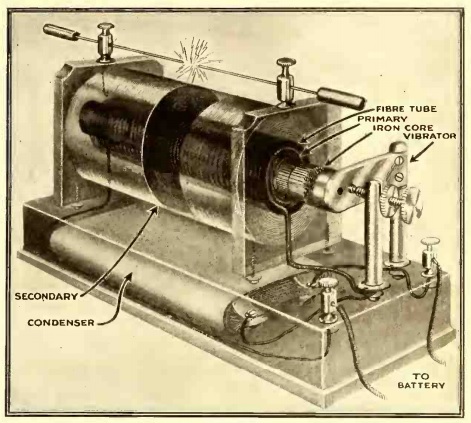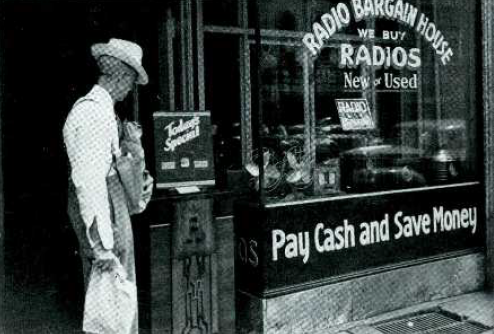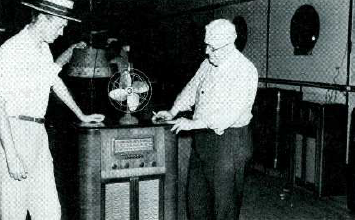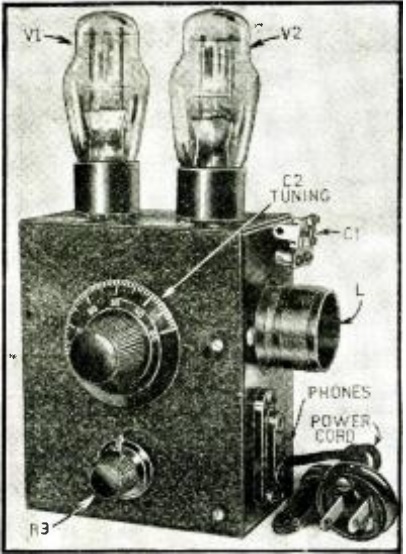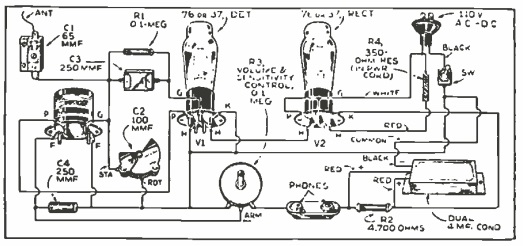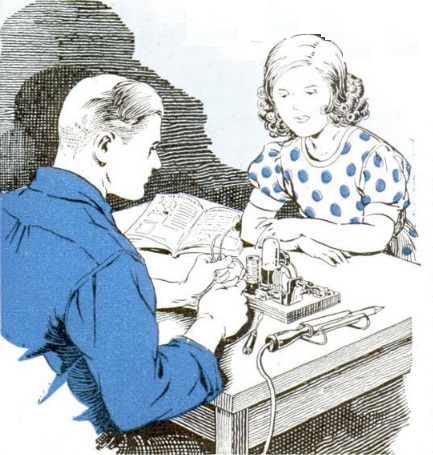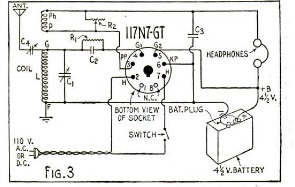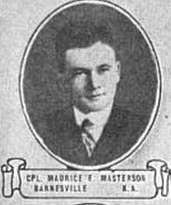One thing that sometimes mystifying when looking at diagrams of early spark transmitters is that the descriptions often lack much detail as to the most important component, the induction coil or spark coil. A good description can be found in Electrical Experimenter magazine, November, 1916, from which this illustration is taken.
The “coil” is really two coils, plus an interrupter, and the operation is described here:
When the primary switch of such a coil is closed, the battery current passes through the first winding on the core and magnetizes it. This attracts the iron armature on the vibrator spring, as shown in Fig. 1, and when this spring breaks contact with the platinum tipped screw in front of it, the circuit is opened. At this juncture there is induced in the secondary winding a very powerful current. The spring-actuated vibrator returns to its former position in the fraction of a second and the process is repeated all over again.
The referenced schematic diagram is shown here:

